Laura Kane, Emma Moore break silence over AFLW controversies, condensed fixture, expansion
After being accused of dodging the spotlight, Emma Moore and Laura Kane have broken their silence to ELIZA REILLY over the AFLW’s future, including the comp’s growth, condensed fixture and more.
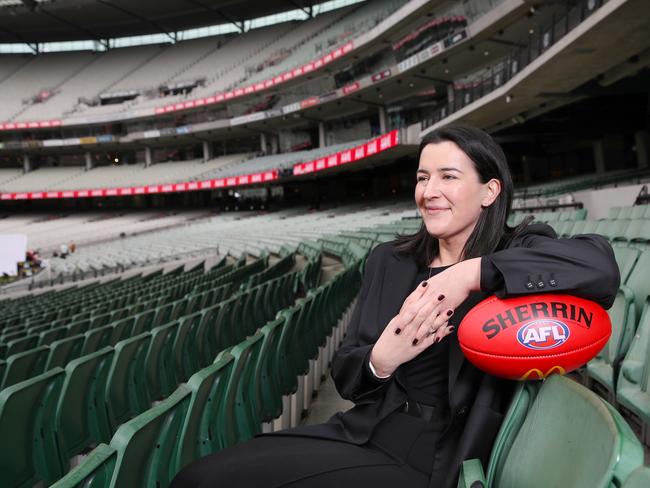
AFLW
Don't miss out on the headlines from AFLW. Followed categories will be added to My News.
The AFL is committed to releasing a three-year vision for the future of the AFLW but will first focus on giving players and clubs certainty on the 2025 season.
In a wide-ranging interview with this masthead, new general manager of AFLW Emma Moore and AFL Executive General manager Laura Kane also revealed that:
- The AFL had not categorically ruled out the return of a compressed fixture
- The competition is moving into a different development phase focusing on growth after navigating expansion
- The AFL is happy with the standard of football, crowd numbers and general health of the AFLW
- The AFL is well aware of criticism directed at the competition and is receptive to it
With the competition at a crossroads, AFLW players and coaches have long been frustrated with the lack of direction from AFL headquarters. Poor decision-making has failed the league since its inception. Despite several cries, the closest thing the competition has to a road map is the 2030 Women’s Football Vision, which focuses largely on grassroots football rather than the elite level.
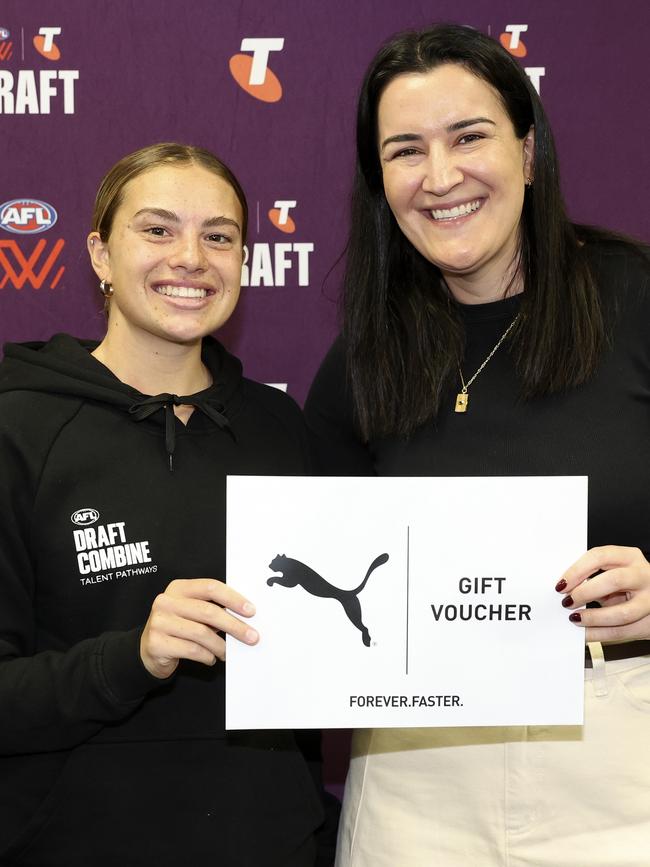
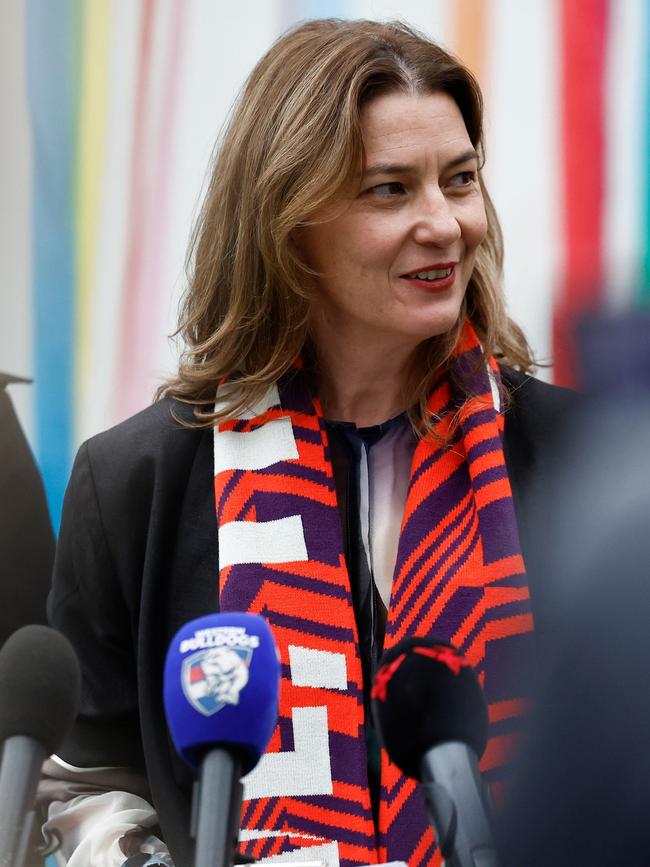
The AFL knows that has to change and is committed to releasing a clear vision for the AFLW’s future. It’s expected that this vision will give certainty on key issues like the timing of the season and when and where games are played.
“You can expect that,” Kane said. “We know that’s what is needed.
“There’s no timeline on it but know that right now, we’re assessing every single thing that happen … every weekend, every venue, every club, every game.
“We feel really good about where we’re at but we won’t rush. But we’re not far away.”
Added Moore: “We have to be clear on our priorities, starting with what we do next year to make a change or make a difference. We will do the same thing again for a three-year strategy.
“We’ll do due diligence to provide certainty and to listen and to go into detail to come up with a vision.”
The AFLW is at the crossroads. In one season, we’ve seen the very best and worst of the comp.
— Eliza Reilly (@ByElizaReilly) October 15, 2024
In this special investigation, we’ve spoken to three highly-regarded former coaches with 138 games experience between them to ascertain the health of the AFLW.https://t.co/OL7wh89fOi
With a background in marketing and strategy, Moore has been tasked with leading the competition’s growth phase. The league is eager to make considered, not reactive decisions following a comprehensive post-season review.
“What we’ve done in previous seasons is different to what we need to do now,” Kane said. “We’ve gone from eight to 18 teams in a really rapid period of time.
“We’ve been in the expansion phase really for this whole time. We need to move now from expansion to future growth. That’s why Emma is here. That’s her expertise.
“The thoroughness will come from what are the big things that are important? What are the big things we can give certainty on? What are the things we can organically grow? And what are the things that we need to strategically grow?”
Moore has been in the job for nearly 14 weeks and has spent much of that time on the road visiting clubs and consuming as much football as she can. It’s her aim to get to at least two games, one home and one away, per club. The former high-level NAB manager has also been ‘mystery shopping’, dropping into matches incognito.
While Kane is the football brains of the operation, taking the lead on footy-specific issues, the footballers and the fans are central to Moore’s ambition for the future of the competition.
“Once you put the scaffolding and foundations in place, then it’s about the engine, the meat on the bones and the parts of it that are going to grow exponentially,” Moore said. “Those are really big decisions to make.
“That’s exactly what I’ve been working on. What we want to do is to set out what we’re doing in the 2025 season as well as what our ambition is for the game.
“I have some ideas about that which I’m working through but at this point, I don’t want to say ‘This is what we’re doing for the next 10 years.’ That would be remiss of me.”
The AFL doesn’t have answers yet on several contentious issues and has not ruled out revisiting a condensed fixture in 2025.
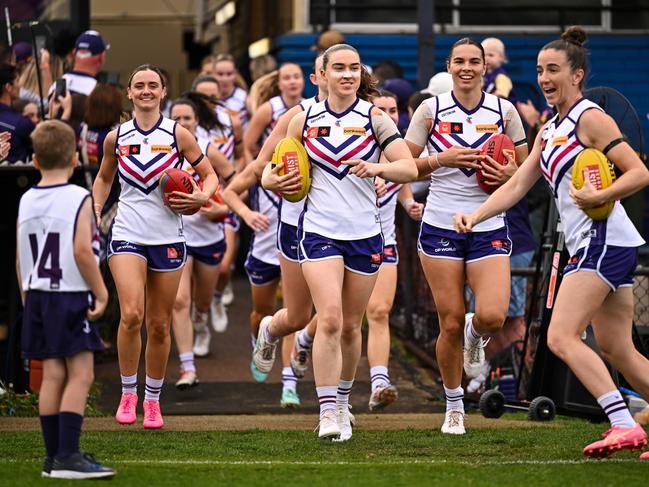
“We’ll look at it all in totality,” Moore said. “We need to look at what we learnt from the compression.
“We know there are some good opportunities in certain timeslots which we wouldn’t know if not for compression. And there are things we can think about like a floating fixture in the men’s finals to increase a one-club mentality or double headers.
“We also want to see the optimal version of teams. One thing clubs did like travelling once for multiple games.”
Kane did acknowledge the increased physical toll on players and the heightened risk of injury. Several clubs have dropped below the availability threshold this season and been forced to call on train-on players and stars like North Melbourne captain Emma Kearney have been ruled out with soft tissue injuries.
“A quick turnaround means players are missing more time than they usually would,” Kane said. “That’s a big consideration for us.
“We’ll listen to the players and fans to come up with a solution. But ultimately we want the best players playing as much as they possibly can.”
The home and away season is guaranteed to increase to 12 games next season. Further growth will be determined by whether the competition hits certain metrics – an average attendance of 6000 and an average television audience of 100,000.
The league has not exceeded an average crowd of 6000 since its third season in 2019, with attendance at games down by more than 60 per cent in the last five years. And while the AFL has agreed with the AFLPA to exclude certain “inopportune timeslots” from this year’s calculation, the 2024 season is all but certain to fall short of the metrics.
“From a CBA perspective, the metrics are clear,” Kane said. “We want it to grow as much as our players do. But the targets are the targets and we agreed to those with a long-term view.
“When we grow and when we hit the metrics, which we will, we know which direction to take.
“The (crowd) numbers are steady. We need to make sure that the offerings that our fans get at their club’s home ground and the rituals that we built into the fixture are recognisable. We want anchor points.”
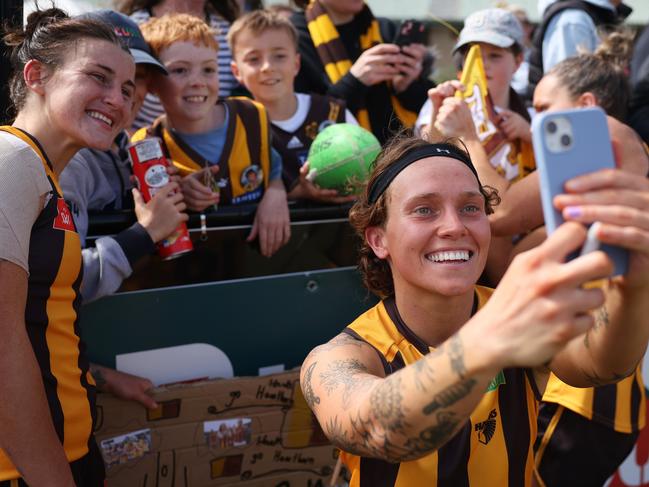
Low scoring has continued to be an issue this season. Stoppages inside 50 have risen and shots on goal are down. Defensive coaching tactics have also been in the spotlight following a dour clash between Essendon and the Western Bulldogs, resulting in two of the three goals being scored from 50m penalties.
The AFL is however satisfied with the standard of football and believes that it will continue to improve.
“The footy is good,” Kane said. “Last year we made a suite of rule changes (increased quarter length, introducing interchange cap and boundary throw-ins being brought into the field of play) not dissimilar to what we did in the men’s to encourage scoring.
“There’s a whole heap of levers we implement to do that and it worked. We had a 40 per cent increase in scoring last year. We’ve seen in the past it takes a couple of years for us to really see the fruits of those changes.
“We’re always looking at scoring, margins, density, congestion. The change in the Bulldogs from last week to this week is massive.
“We want every game of football to be fast-paced, exciting, entertaining, close and high-scoring.”
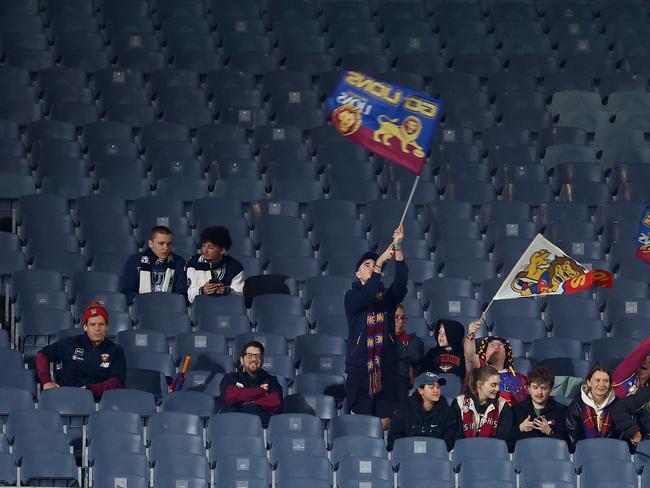
Kane also believes that the decision to move to a national draft, the fact that all but one state is currently represented in the top eight and the race between Hawthorn and Brisbane for the McClelland trophy demonstrates that competitive balance is being achieved despite the continued strength of the ‘big three’ in the Lions, Adelaide and North Melbourne.
“We want fans turning up to their team’s games and thinking they can win,” she said. “That takes time.”
There’s no decision yet on when list sizes will increase and by how much, with the AFL currently exploring state league uniformity to give greater opportunity to non-selected players.
Experts have criticised the AFLW for failing to adequately market the competition. Moore said one of her focuses would be trying to tap into and convert the wider football-supporting public into AFLW aficionados.
“The awareness of W is huge,” she said. “There’s always more work to be done when it comes to every part of the strategy.
“There’s something about unlocking the emotional piece and passion that every football fan has. How do we get this one club feeling in our marketing, our communications and our fans?”
My thoughts … yours? #AFLWpic.twitter.com/fgddvHFeg3
— Sarah Burt (@burt_sarah) October 18, 2024
The AFL is acutely aware of the intense criticism it’s been subject to this season, some going as far as declaring that the league has set the competition up to fail. And despite being accused of not making themselves publicly available to speak on the state of the AFLW until now, both Kane and Moore are listening to the scrutiny.
“There will always be noise,” Kane said. “It’s a privilege to respond to that noise because it means that people care.
“There’s no shortage of feedback but we wouldn’t have it any other way. We will make it better.”
Added Moore: “I take it seriously. It’s on me to understand where that passion is coming from.
“Most of the time, it’s coming from a place of ‘We want this to be the best thing it can possibly be.’ I think people should say what they think.”
Like many, I’m team AFLW and want to see the competition thrive. But at some point, the league will have to answer some tough questions about the state of the game and the way forward. https://t.co/M7FCZOvMYC
— Eliza Reilly (@ByElizaReilly) October 17, 2024
Having witnessed the growth of the AFLW from both sides of the coin after starting her career in football at North Melbourne, Kane is confident in the health of the competition.
“It’s a competition we’re really proud of,” she said. “We’re now the largest employer of female athletes in the country.
“We have 540 women playing across 18 clubs and we need to take a moment every now and then to reflect on the power of women’s sport and the movement that’s occurred.
“We want the best athletes, the best coaches, the best administrators in the country to pick our game. We want to be the first choice for everyone.
“One in 20 Australians is a member of an AFL club. We want those 1 in 20 plus the other 19 to get to know AFLW if they don’t, love it even more if they do but also love it, attend it and understand that it doesn’t necessarily need to be the same as (AFL).”
More Coverage
Originally published as Laura Kane, Emma Moore break silence over AFLW controversies, condensed fixture, expansion





